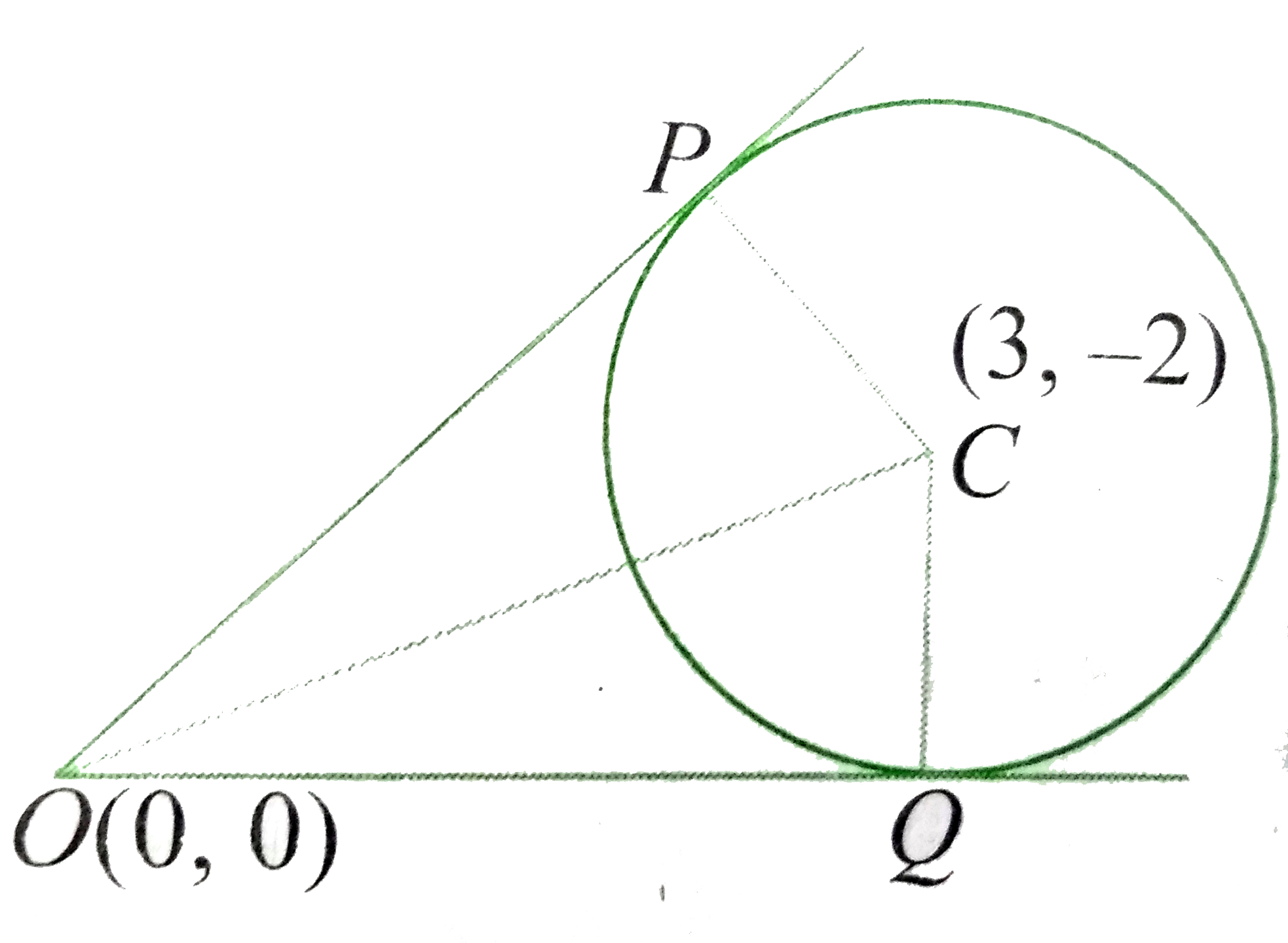If O is the origin and OPandOQ are the tangents from the origin to the circle x2+y2−6x+4y+8−0 , then the circumcenter of triangle OPQ is (3,−2) (b) (32,−1) (34,−12) (d) (−32,1)
(3,−2)
(3/2,−1)
(3/4,−1/2)
(−3/2,1)
The correct Answer is:2

Clearly, OPCQ is a cyclic quadrilateral. Then the circumcircle of ΔOPQ passes through the point C.
For this circle, OC is diameter. Then the center is the midpoint of OC, which is (3/2,−1).
Topper's Solved these Questions
- BOOK - CENGAGE ENGLISHCHAPTER - CIRCLE EXERCISE - Multiple Correct Anser Type29videos
CIRCLE
- BOOK - CENGAGE ENGLISHCHAPTER - CIRCLE EXERCISE - Linked Comprehension Type (For Problem 1-3)3videos
CIRCLE
- BOOK - CENGAGE ENGLISHCHAPTER - CIRCLE EXERCISE - CONCEPT APPLICATION EXERCISE 4.201videos
CIRCLE
- BOOK - CENGAGE ENGLISHCHAPTER - BINOMIAL THEOREMEXERCISE - Matrix4videos
BINOMIAL THEOREM
- BOOK - CENGAGE ENGLISHCHAPTER - CIRCLESEXERCISE - Comprehension Type8videos
CIRCLES
Similar Questions
If O is the origin and OP, OQ are distinct tangents to the circle x2+y2+2gx+2fy+c=0 then the circumcentre of the triangle OPQ is
View SolutionThe pair of tangents from origin to the circle x2+y2+4x+2y+3=0 is
View SolutionFind the angle between the tangents
drawn from (3,2) to the circle
x2+y2−6x+4y−2=0View SolutionThe equation of the normal to the circle x2+y2+6x+4y−3=0 at (1,-2) to is
View SolutionSTATEMENT -1 : if O is the origin and OP and OQ are tangents to the circle x2+y2+2x+4y+1=0 the circumcentre of the triangle is (−12,−1) .
and
STATEMENT-2 : OP.OQ=PQ2.View SolutionFind the pair of tangents from origin to x2+y2+4x+2y+3=0
View SolutionThe number of real tangents that can be drawn from (2, 2) to the circle x2+y2−6x−4y+3=0, is
View SolutionIf (1,2) (2,a) are extremities of a diameter of the circle x2+y2_3x−4y+6=0 then a=
View SolutionFrom the point P(2, 3) tangents PA,PB are drawn to the circle x2+y2−6x+8y−1=0. The equation to the line joining the mid points of PA and PB is
View SolutionThe equations of the tangents drawn from the origin to the circle x2+y2−2px−2qy+q2=0 are perpendicular if (A) p2=q2 (B) p2=q2=1 (C) p=q2 (D) q=p2
View Solution

